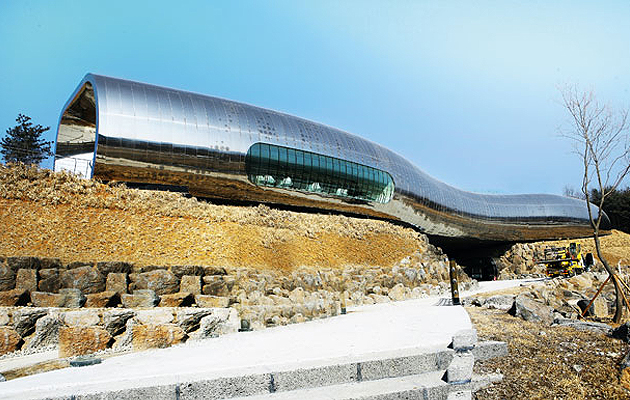|
|
||
|
Natural history museums around the world may feel a little dusty and self-conscious when they see the shiny steel serpentine structure of the new Jeongok Museum in South Korea. Paris-based architect X-TU has just completed the curving museum, which slinks over the ground like a Carsten Höller chute. Its design won a competition asking architects to reflect the prehistoric context of Jeongok, a small but archaeologically significant city 200km from Seoul. Jeongok’s fossil-filled ground holds the story of the country’s first human inhabitants 300,000 years ago, and was the site of the discovery of the first hand axe in east Asia.
X-TU’s bridge-like structure spans between two hills and is designed as a conceptual link between past and future. The architect says the building is designed to “converse” with the Hantan Hills: it prolongs their curves, emanates from their contour lines and responds to the nearby river. From a distance the building looks like tubes of liquid mercury. The glinting steel facade is etched with snaking patterns and perforations that leak light into the interior spaces and are illuminated at night. “We wanted to make something with no reference in the world,” says Anouk Legendre of X-Tu. “We wanted to make something that reflects, and because light is not material, the shape is changing with the light all the time.” The gleaming interiors of the exhibition space are like a winding path or meandering river, intended to operate as a continuous loop, with islands of individual galleries throughout the museum. The architect visited several similar museums and worked with both Korean and French scientists as part of their research. Every aspect of the museum is integrated into the structure of the building, so furniture and exhibits merge with the curving walls. The interior is bright, car-showroom white, creating a surreal film-set aesthetic when contrasted with the exhibits from the Chugaryeong Rift Valley, fossil skeletons of human evolution and restorations of cave paintings.
|
Image X-TU Architects
Words Beatrice Galilee |
|
|
||




















